Our Best Iceland Travel Tips For Your Next Trip

If you’re preparing to travel to Iceland, these Iceland travel tips will help you along the way. These Iceland travel tips come from our personal experience traveling multiple times in one of the most beautiful places in the world. We’ve written countless articles about traveling in Iceland, which you can see in our Iceland travel guide.
The truth is Iceland’s landscape can be found nowhere else. A mixture of hot springs, glaciers, wet deserts, lava fields, and a dizzying amount of waterfalls makes Iceland an adventure destination dream. No matter how you plan to travel to Iceland, these tips will improve your trip!
Our Best Iceland Travel Tips
There is no “Best Time” to Go
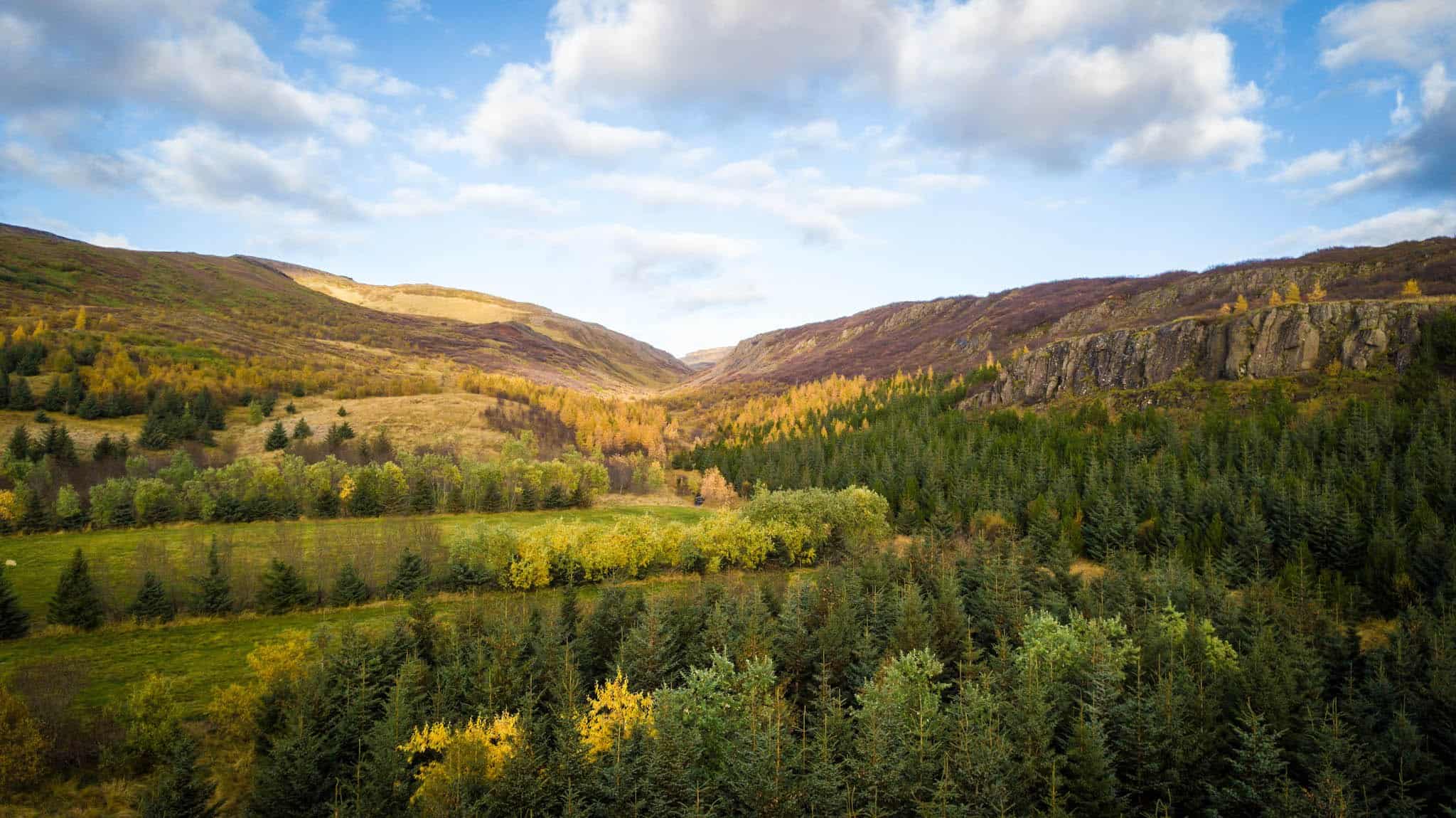
So, when is the best time to visit Iceland? The short answer is that it depends on what you want when traveling to Iceland. Are you searching for warm weather and the midnight sun? Or do brisk winter nights, fewer crowds, and the Northern Lights strike your fancy?
If I were to pick ideal times, it would be June, October, and December. Generally, November and March are the months to avoid as they’re between seasons (cold rain). However, after our most recent two-week trip in June, all I have to say is to plan for everything in Iceland – the weather truly is unpredictable.
When To See the Northern Lights
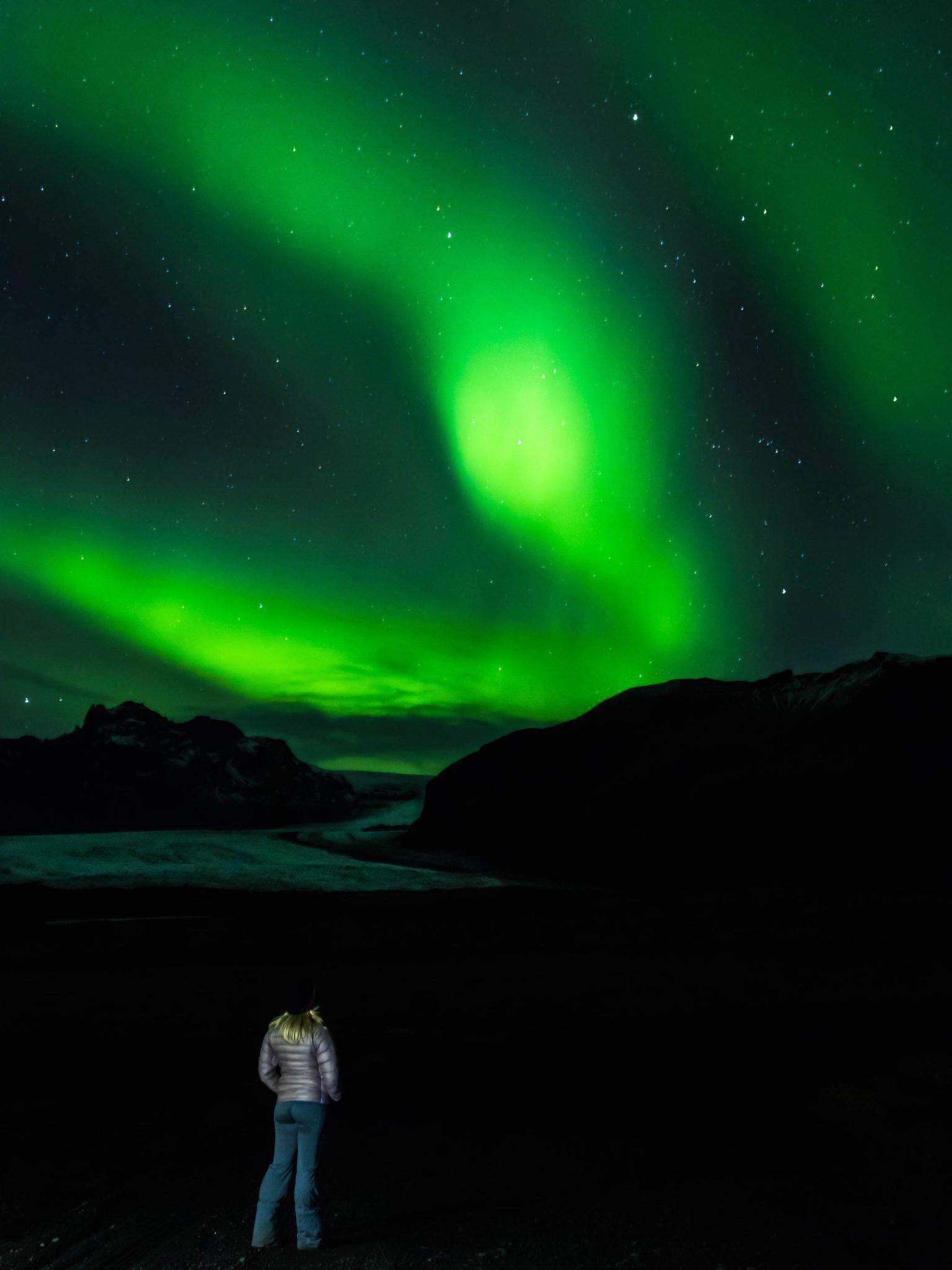
Of course, it’s possible to see the aurora in Iceland, and it’s one of the best places in the world to witness the sky light up in greens and purples. This phenomenon is typically observable from September to April. Don’t arrive in June expecting to see the aurora, as it barely gets dark during this time.
The aurora borealis is most active during the equinoxes, so October and March. We’ve been fortunate enough to witness the lights many times over the years, including at home, and the best shows have been in those months.
The key factors to spotting the Aurora include finding a location free from light pollution, having clear skies, and hoping for active aurora displays. It’s worth noting that if the aurora activity is particularly strong, it may even be visible in Reykjavík and other towns. We suggest booking accommodation outside of the city for a trip to see the lights.
It’s not AS expensive as you may think.
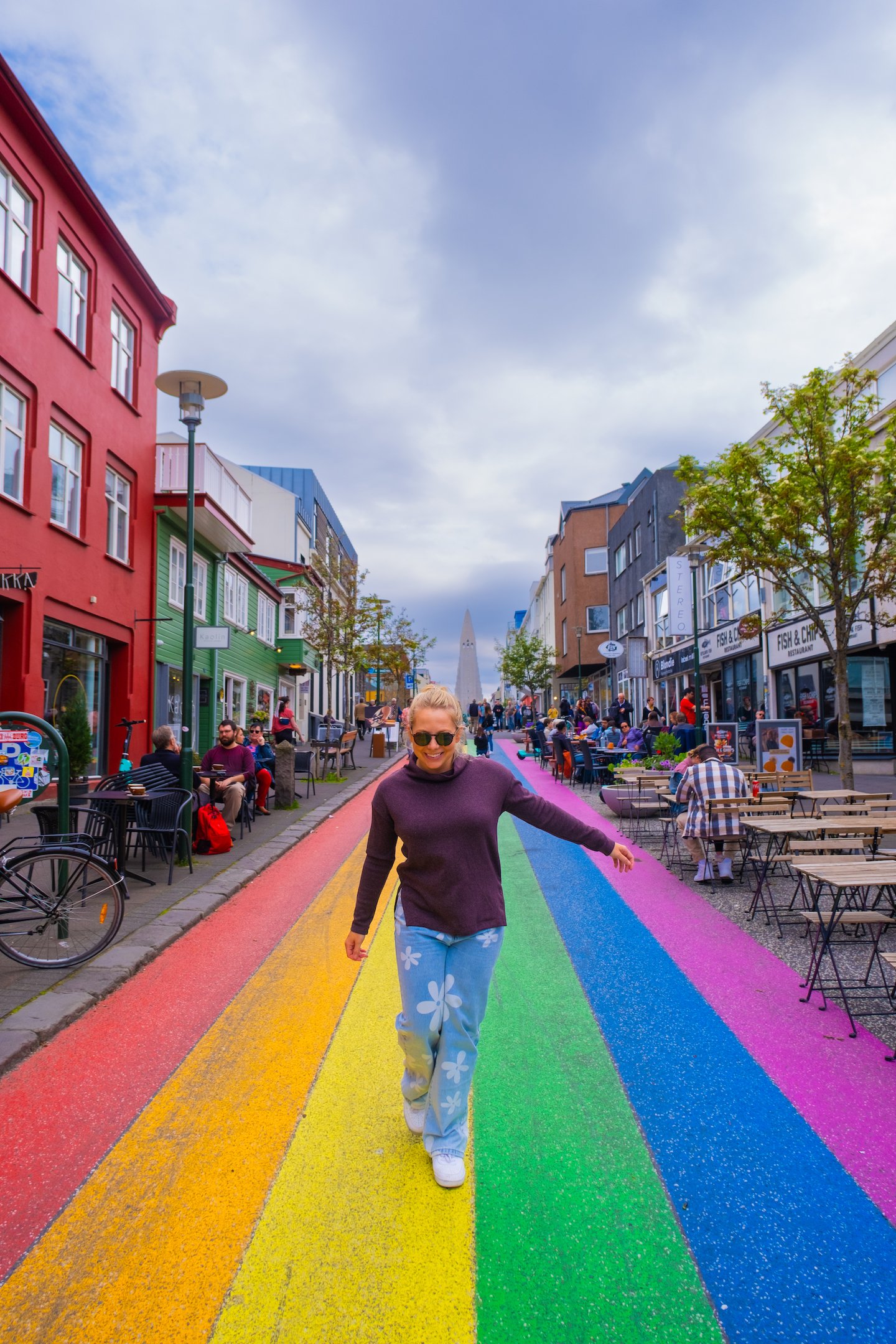
Iceland is known for being one of the most expensive destinations in the world—and it is! However, with some planning, it can be done more affordably. Some of the best ways to save money are to travel during the off-season and avoid eating out. Restaurants and alcohol in Iceland are costly.
If you focus more on hiking excursions and less on paid attractions like the Blue Lagoon or snorkeling the Silfra Fissure, you’ll save some money! We’ve traveled to Iceland three times now. The first time, I backpacked on a budget of $40 a day (back in 2013—inflation!). On our second trip, we visited in October to take advantage of off-season rates.
On our last trip, we visited Summer Solstice, the high season in Iceland. For two weeks, we spent $7500 for two people or $300 per person per day. This included our campervan, campsite fees, fuel, activities, food—everything. It is far from the cheapest trip we’ve ever taken, but it is not out of the realm of possibility for many travelers. Read more with our article on travel costs in Iceland.
Tipping in Iceland
It’s not customary to tip in Iceland, so rest assured that at least that high restaurant bill includes the tip!
It’s a Great Destination For a Campervan!

With its natural spaces, lack of development, and campsites, Iceland is a wonderful destination for renting a campervan or motorhome. While a camper is more expensive than a car rental, you can sleep and cook in it! You don’t have to search for hotels or deal with costly restaurants in Iceland.
While the summer rates with a campervan are quite high, we love the freedom and flexibility the campervan gives us. Having the ability to drive for as long as we want during the day, stopping at as many sights as we wish to, without worrying about making it to our hotel or dinner reservation, is the ultimate freedom.
Having a campervan also allowed us to stay well past midnight to see the famous sites without the crowd and crash in the camper for a power nap afterward. Like I said, a camper is a way to do it if you’re after freedom. Plus, you sleep in nature every night and still use a heater in the winter if you wish! We have an article on campervan travel in Iceland and a review of the company we used for our trip, Happy Campers.
You don’t have to reserve a campsite

You must stay at a campsite if you plan on camping around Iceland, whether with a tent, campervan, or RV. At least, that’s the law if you’re traveling around via vehicle. Those on foot or bike have different laws around wild camping.
Unlike camping in the US or Canada, you don’t have to reserve the campsite in advance. There are hundreds of campsites around Iceland, and you can roll up at any time, without reservation, and set up camp. If you arrive late at night and no one is there to take payment, you can pay in the morning when the office opens!
Iceland Campsites…

Speaking of campsites in Iceland, don’t arrive expecting to find private grounds in the woods with a nice place to build a fire, as we did. Campsites in Iceland are usually nothing more than a parking lot. Sometimes, there is grass, and sometimes there are trees for privacy. The nice ones have clean toilets, hot showers, and a kitchen area.
Icelandic campsites are often run by local Icelanders who happen to have some extra land for campers. We camped at 14 campsites in Iceland in the summer and paid anywhere from 1600 ISK to 2500 ISK per person per night for parking on the land, for a total of $350 for the two weeks—in addition to our campervan rental.
Most campsites only operate in the summer, so if you travel to Iceland in the off-season or winter, you’ll have to work a bit harder to find open campsites. Occasionally, some campsite owners will let you park on their land in the winter, but no facilities are usually available beyond this. We learned this the hard way when we traveled in October.
Book Your Accommodation in Advance

If you’re not camping or in a campervan/RV, you’ll need to book hotels and guesthouses. There is not nearly enough accommodation to accommodate the large number of tourists Iceland sees in the summer. If you’re traveling during the high season (summer months), you’ll want to book your accommodation well in advance.
How far in advance? We recommend six months or more to score some of the best rates and have more options. This ensures you’ll find the best places and have the best trip possible. Where you stay can make a big difference in the quality of a trip.
paid parking stations Are annoying
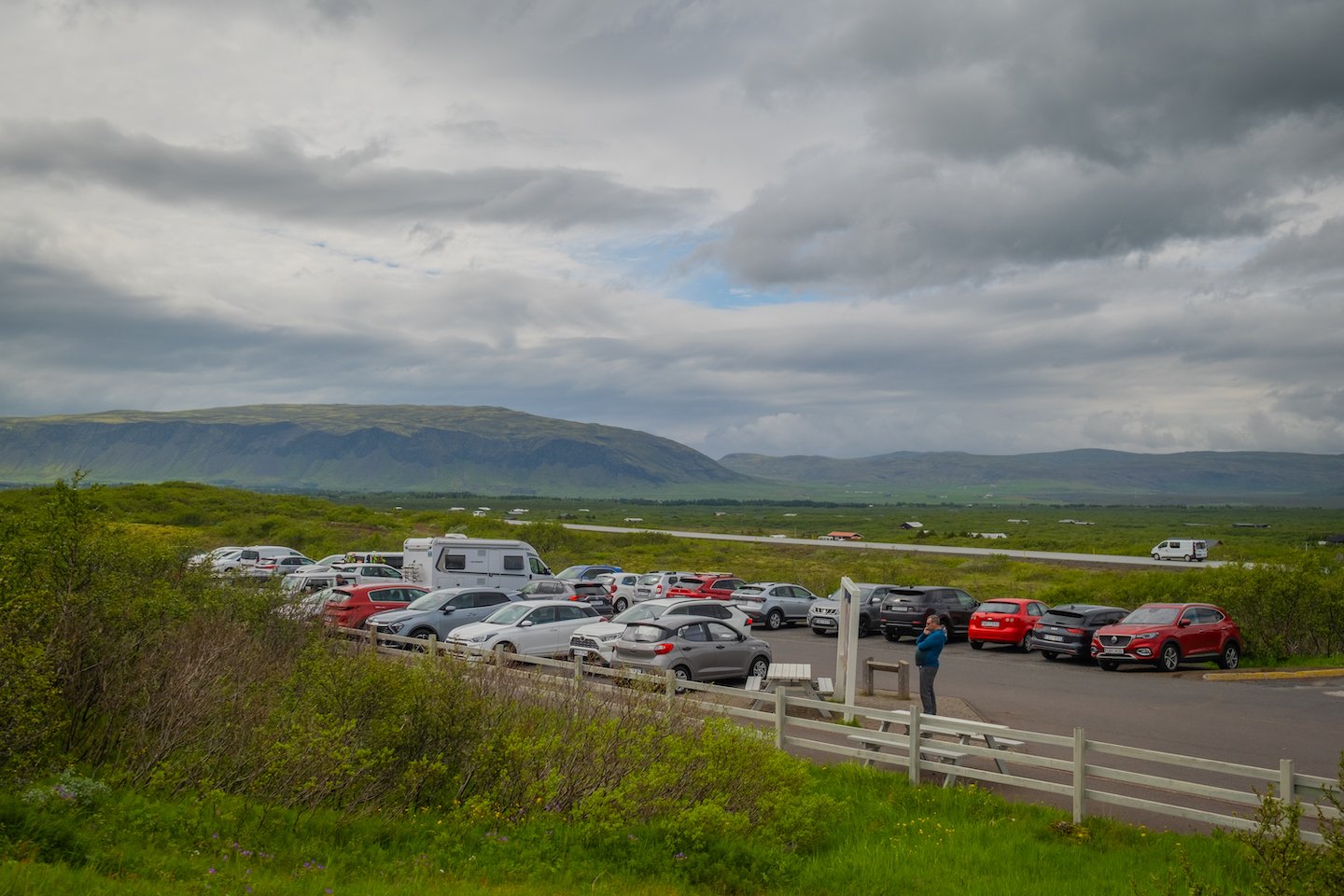
Most destinations in Iceland offer free parking, allowing you to drive without concern about parking fees or road tolls. Nevertheless, it’s crucial to be aware that certain locations require parking payment, and at times, travelers may unintentionally overlook checking for paid parking spots.
These fees apply in national parks like Skaftafell or Thingvellir, downtown Reykjavik, and popular attractions such as the Geldingardalir (Fagradalsfjall) volcano and Seljalandsfoss waterfall. Most of the paid parking areas in Iceland are like something out of the future, too. No parking attendant is checking to see if you paid. Instead, you’ll find a camera that takes your license plate when you pull into the lot.
That means as soon as you pull into the lot, your license plate is noted, and you’ll be subject to pay the parking fee, even if you end up not staying or didn’t mean to pull into the lot. Some parking areas give a 10-minute grace period, but some do not, and it became annoying for us as we weren’t given a chance to decide if paying 1000 ISK to park was worth the viewpoint or sight we were at. The easiest way to pay for parking is through the Parka app (Download: Google Play | App Store) or the website parka.is.
Most Roads are just one lane

The majority of roads in Iceland consist of two-lane paved stretches, and this includes the Ring Road. Nonetheless, it’s not uncommon for a “main” road to unexpectedly transition from a smooth, well-paved surface to a gravel road. Fortunately, even these gravel roads are generally well-maintained and pose no issue for all types of vehicles, even 2WD cars, ensuring safe travel conditions.
Watch Out For Sheep!
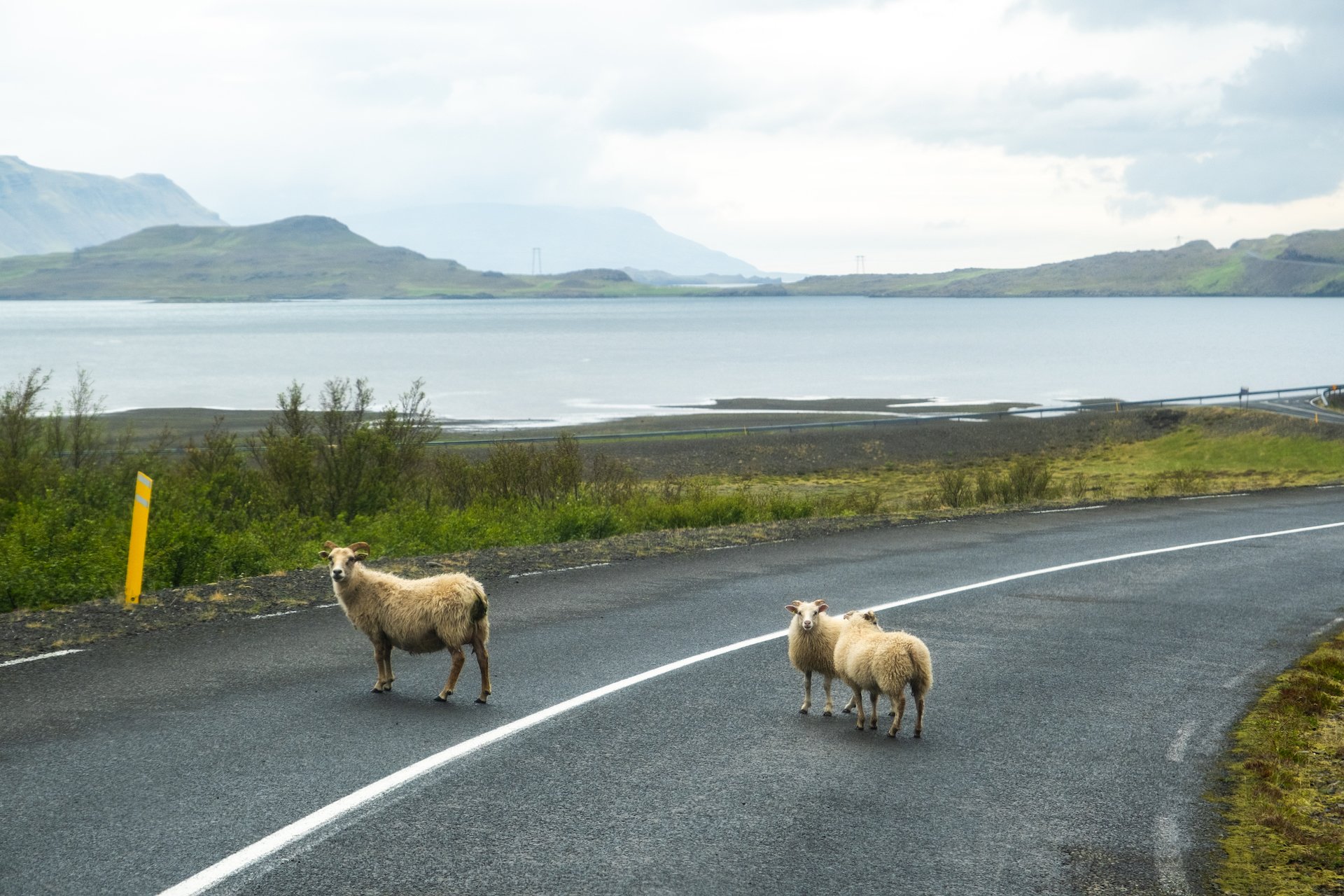
Like in the nearby Faroe Islands, sheep are everywhere in Iceland, and you’ll need to watch out for them while driving. They sometimes tend to wander into the road, and you’ll need to slow down and avoid them. Give them space and always follow the speed limit.
Do not speed
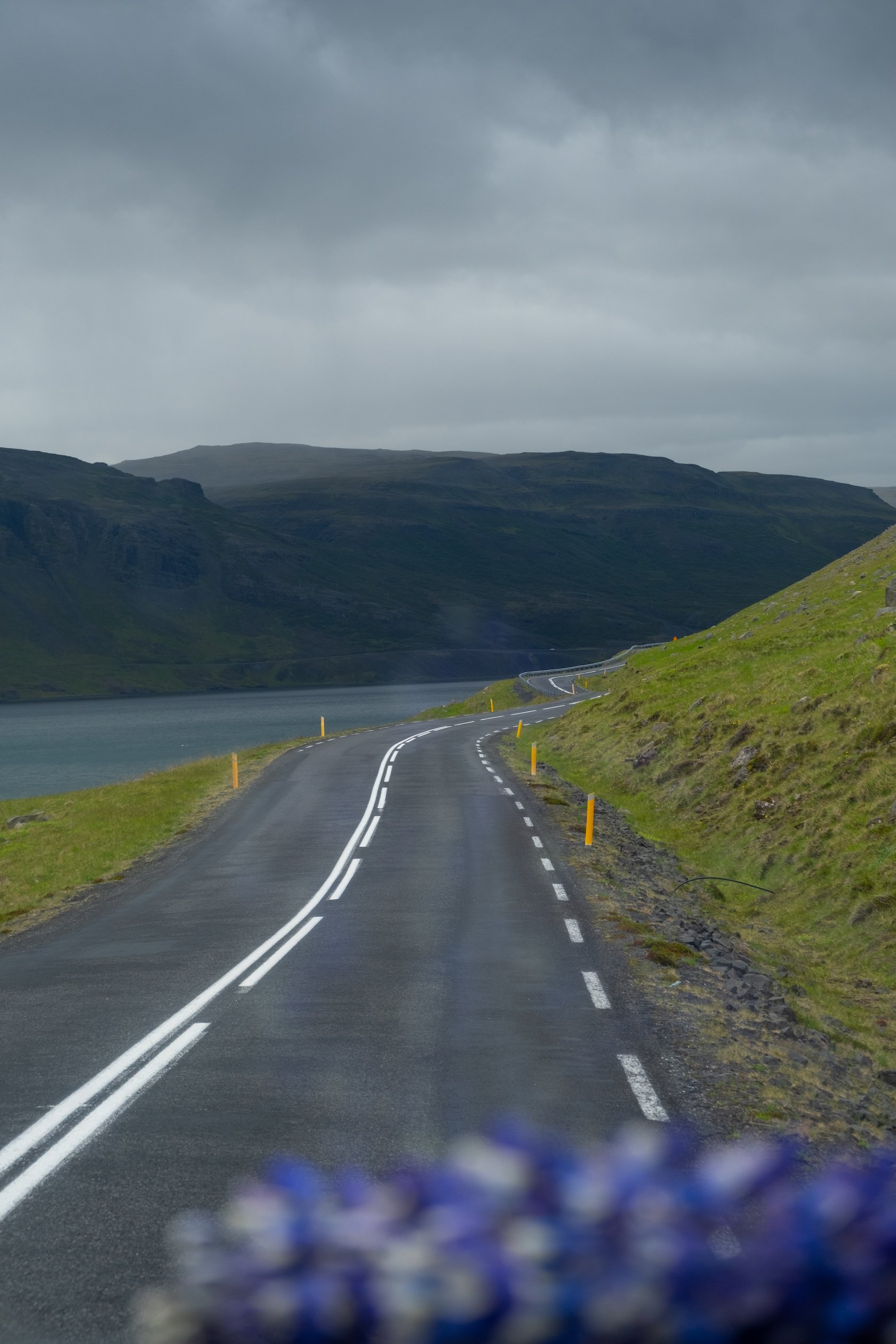
If you rent a car in Iceland and plan to drive around, adhere to the speed limits. You don’t want a speeding ticket in Iceland! There are speed cameras around Iceland, but they generally give you fair warning when they are there. Speed tickets are incredibly steep in Iceland, and you’ll be pretty sorry if you get a ticket; they often require foreigners to pay on the spot.
F Roads

In Iceland, F-roads, also known as mountain roads or highland roads, are a specific classification of roads that traverse the country’s remote and rugged interior. The “F” stands for “Fjallvegur” in Icelandic, which means “mountain road.” These roads are unpaved and typically only accessible during summer when conditions are more favorable.
F-roads are characterized by challenging terrain, including gravel, rocks, river crossings, and steep inclines. They often require vehicles with high ground clearance, four-wheel drive (4WD), and specialized equipment to navigate safely. Due to their remote nature and difficult conditions, traveling on F-roads is considered an adventure and requires careful preparation and caution.
Not every rental car or campervan can travel on F-Roads, and you’ll need to rent a 4×4 specifically if you want to get into the Icelandic Highlands. This can add to your trip’s cost, but it’s worth seeing the beautiful Highlands. Do not drive a car that is not rated to handle the F Roads down an F-Road. If you damage the vehicle, insurance from your rental car agency is typically voided, and you could pay large for your mistake.
Credit Cards Are King

We have never used cash in Iceland. Credit cards are accepted everywhere—even in public bathroom stalls. Of course, having some money on you never hurts, but I wouldn’t convert much of it to Icelandic Kroner. We have a post with tips for travel banking. We suggest you carry around 5,000 ISK to escape any unknown situations. We recommend every traveler have a credit card with no foreign transaction fees that provides travel rewards.
Drive the Ring Road

Iceland’s Ring Road, or Route 1, takes you around the entire country—like a ring! It’s one of the best road trips in the world and takes you to some of the best spots in Iceland. The route took us about 12 days, but you can do it in 5-7 days if you are short on time. Along the route, you find some amazing things to do in Iceland, including the Mývatn Nature Baths, Skógafoss, and the Jökulsárlón Glacier Lagoon.
Drive the Golden Circle
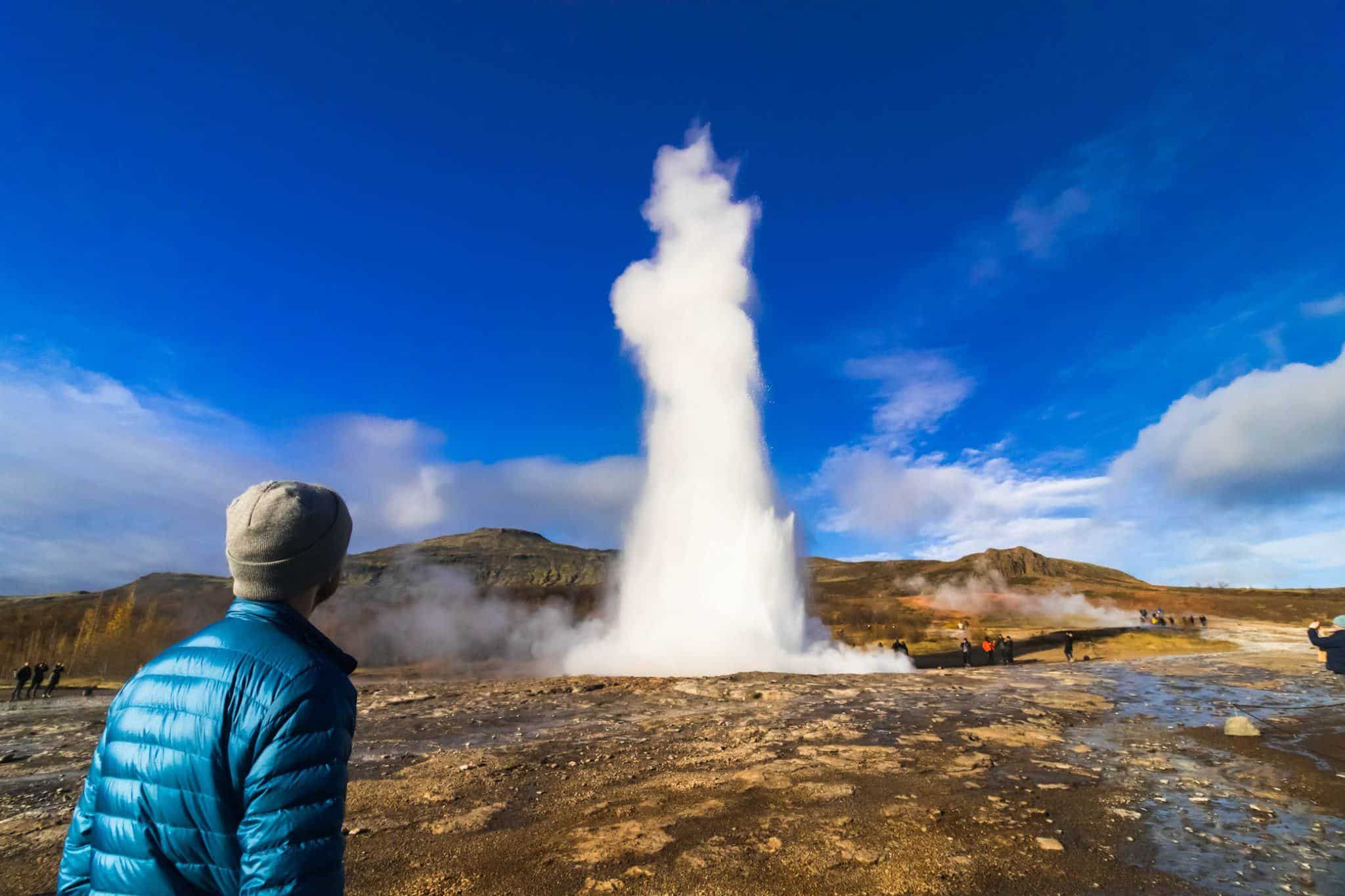
If you only have a short time in Iceland and want to leave Reykjavik, consider renting a car and driving the Golden Circle. The Golden Circle is a 300-kilometer route that loops in and out of the capital. It’s only a one-day drive or tour out of Rejykavik and will take you to fantastic sights, including Þingvellir National Park, Gullfoss Waterfall, and Geysir and Strokkur. You can also loop in the Kerið volcanic crater and the town of Hveragerði, the hot springs capital of Iceland.
Head to the Snæfellsnes Peninsula

If you have extra days in Iceland, one of my top Iceland travel tips is to head to the Snæfellsnes Peninsula. It’s only a two-hour drive from Reykjavik. The Snæfellsnes Peninsula has been dubbed “Little Iceland” because it displays a wide variety of beauty found throughout Iceland on a compact peninsula.
Waterfalls, cathedral churches, glaciers, and numerous mountains can be found on the peninsula. Side note: You can also discover Kirkjufell, the famous mountain from Game of Thrones. It’s shaped like an arrowhead. 😉
get off the ring road
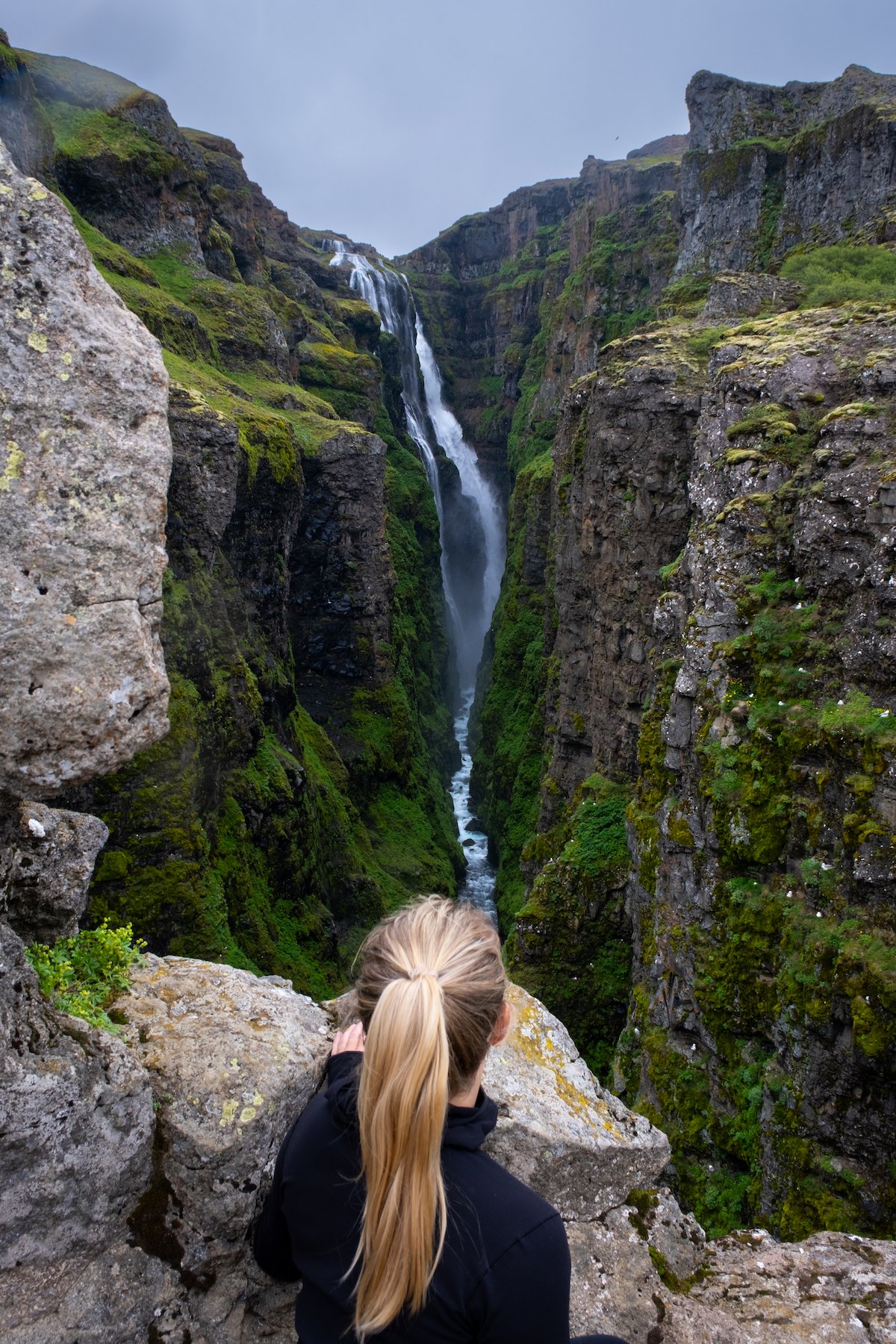
I know we said to drive the iconic Ring Road, and you 100% should; however, don’t forget to venture off the loop around Iceland. The Ring Road stays pretty busy, especially in the summer and along the south coast of Iceland. Some of our best stops were found by venturing off the Ring Road. We especially loved exploring Husavik and hiking to Glymur Waterfall!
The South Coast of Iceland

We’ve now driven the Ring Road twice, in both directions, the Snæfellsnes Peninsula and other parts of the country. The one area that is significantly busier than the rest of Iceland is the southern coast. This is where famous sites like Skogafoss, Vik, and Seljavallalaug Swimming Pool are.
The southern coast is arguably the most dramatic part of Iceland, with waterfalls galore. It’s not a far drive from Reykjavik, meaning many people can take day trips to the area. This keeps the southern coast plenty busy!
Visit Landmannalaugar!
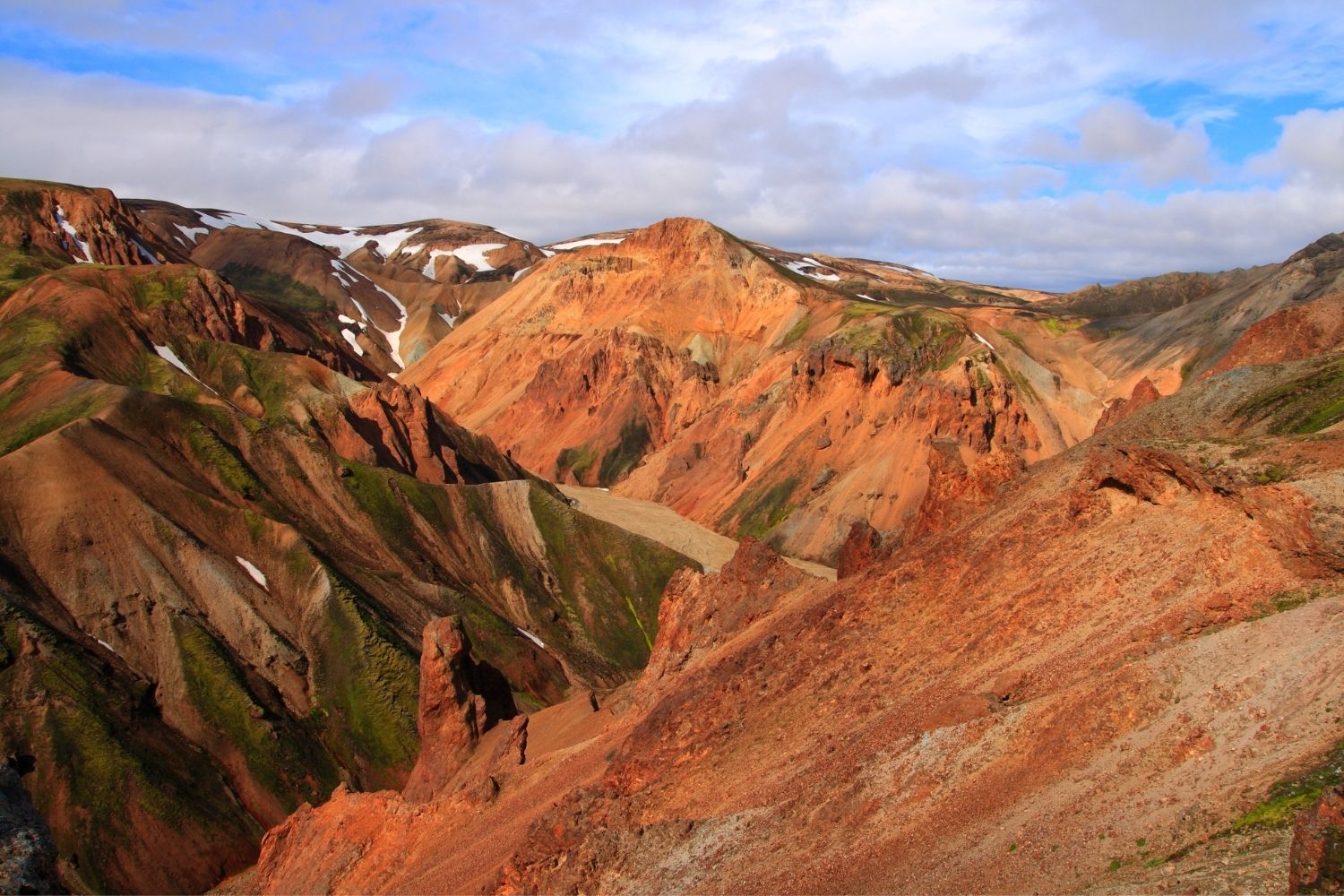
Along with getting off the Ring Road, we highly recommend you carve out time in your Iceland itinerary for Landmannalaugher. This is in the Highlands of Iceland, and to reach Landmannalaugar, you’ll need one of those 4×4 vehicles we discussed, or you’ll want to jump on a tour! Seeing this otherworldly land where so many movies have been filmed is well worth it.
Consider Skipping the Blue Lagoon
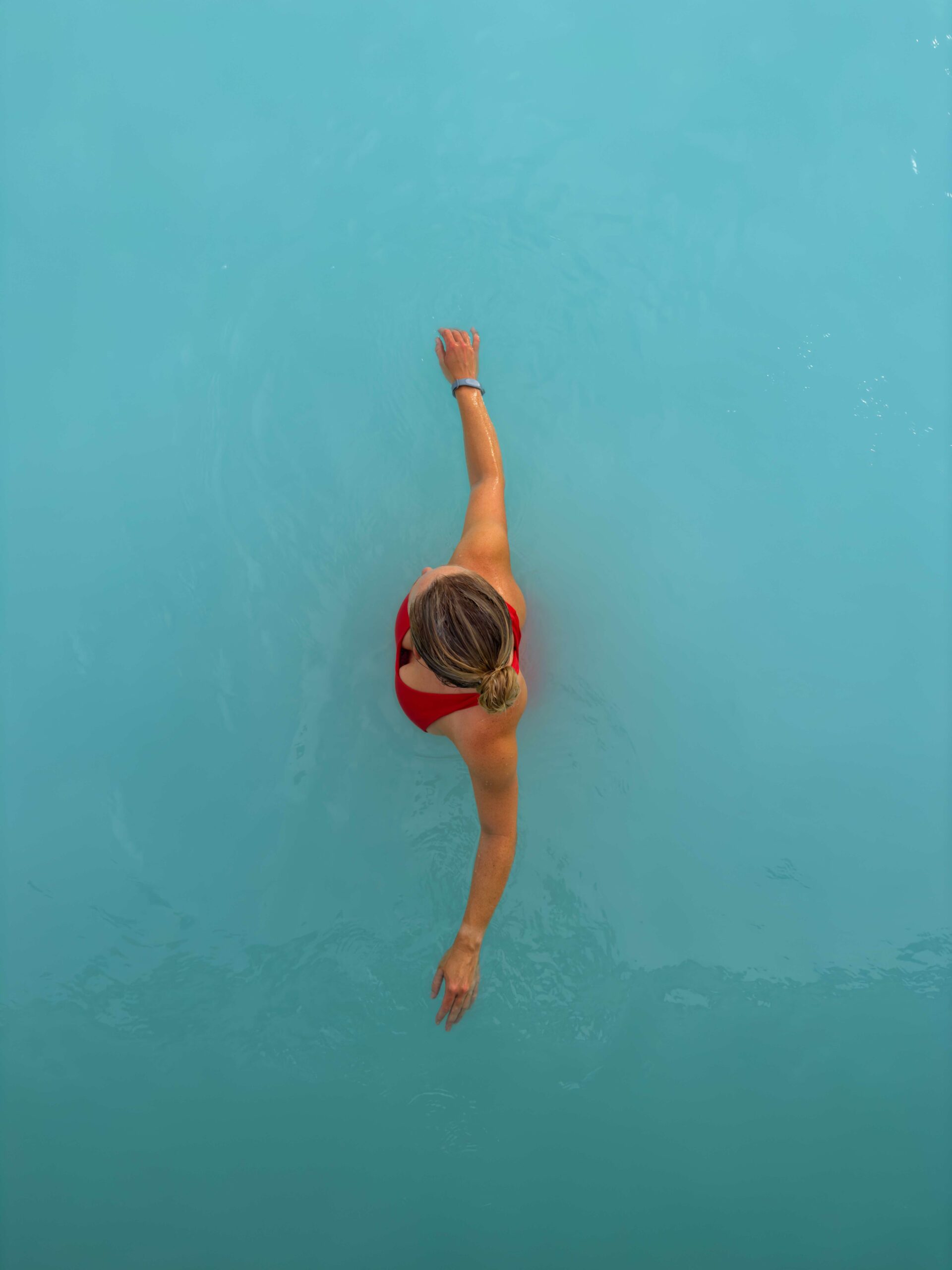
Since you’re reading our blog, I assume you aren’t living under a rock. You’ve probably heard of the Blue Lagoon in your Iceland travel research in that same train of logic. The famous geothermal spa hosts over one million visitors a year.
The Blue Lagoon is an Instagram fanatics’ haven, and it should be for the high price tag. The Blue Lagoon is a tourist trap at its finest, and all locals will tell you that. If you’re on a budget, consider going to one of Iceland’s local pools for a swim and a chat with the locals or visiting a natural pool.
However, if you don’t mind the price and crave the mud masks and outdoor spa in Iceland, it might be right up your alley, and you’ll like it! It took me three visits to Iceland to finally cave in and book a very expensive ticket to the Blue Lagoon to see what all the fuss was about. Of the 10+ hot springs we’ve visited in the country, the Blue Lagoon is the most disappointing.
Our Favorite Thermal Baths & Hot Springs
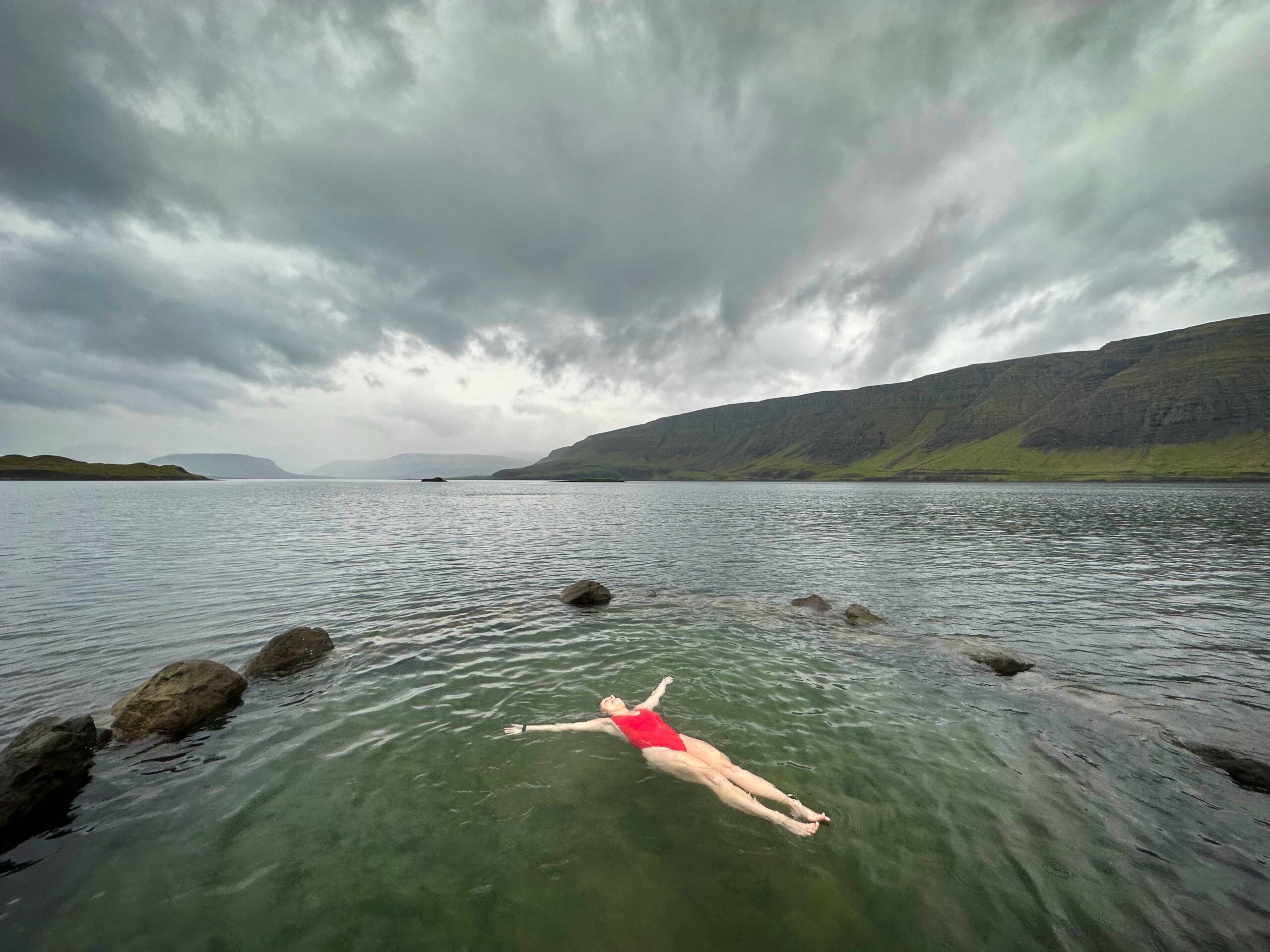
On our trip, we visited many hot springs and thermal baths. One of our favorite things to do in the early morning or evening was hit up a hot spring. If you are camping and don’t want to be bothered with showering at the campsites, all the thermal baths and geothermal spas have luxurious showers—typically with toiletries!
Here are some of our favorites:
- Reykjadalur Hot Springs: Hike to these free hot springs and stay a few hours.
- Hvammsvik Hot Springs: Our absolute favorite hot springs in all of Iceland.
- Vok Baths: Located in Northern Iceland, these baths have floating pools
- Forest Lagoon: Located in Akureyri, these hot springs are hidden in the forest and have the best cold plunge.
- Krauma: Just an hour from Reykjavik, these are a quiet alternative to the Blue Lagoon.
- Sky Lagoon: This is a fantastic alternative to the Blue Lagoon; however, there is no milky blue water.
Don’t be Afraid to Get Naked
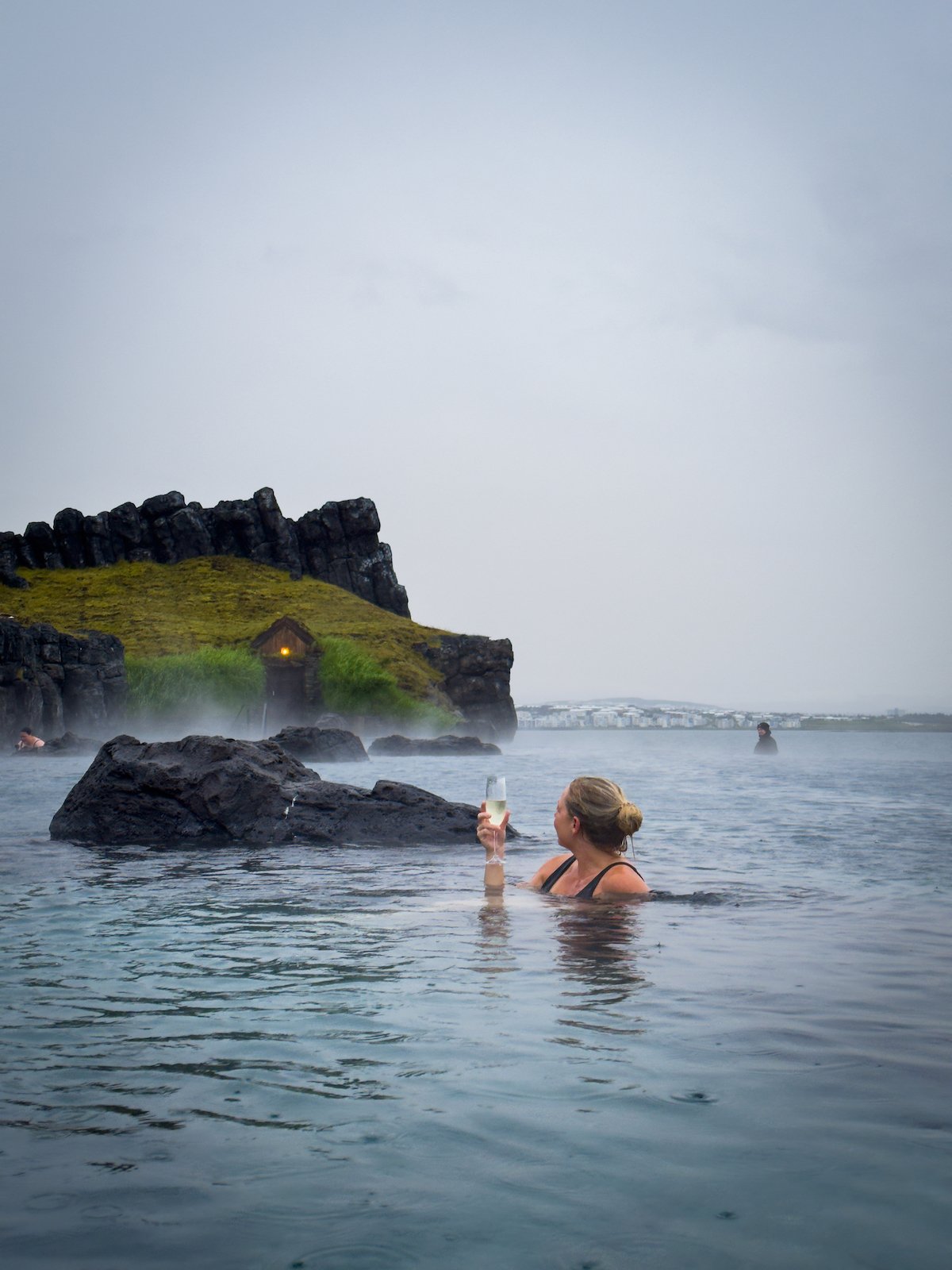
Speaking of pools, you must shower before entering if you go to a public pool in Iceland. This is a non-negotiable aspect of visiting an Icelandic pool. You must shower naked in an open shower. There are often private showers in the tourist thermal baths, such as the Sky Lagoon and Blue Lagoon.
The Icelandic people take their hygiene seriously and don’t want anyone’s dirty bodies infecting their pools. They use minimal water treatment in the natural geothermal water that fills the pools. I appreciate knowing that every person has showered and scrubbed when I am in the swimming pool before entering. Showers are separated by sex, so everyone is comfortable. I wouldn’t suggest skipping around the naked or shower part, as it may get you a few scowls from the locals, or you could even get kicked out! It’s okay – no one cares.
Visit sites outside of peak hours

Many of Iceland’s most famous sights, especially along the South Coast and Golden Circle, are incredibly busy. I’m talking about beautiful Skogafoss, Reynisfjara Beach, Svartifoss, and Seljalandsfoss. These places are amazing and worth stopping by, but one of our top Iceland travel tips is to visit them outside the hours of 10-6 p.m. In the summer, you’ll be rewarded if you stay up past midnight and visit – trust me! The sleepless nights are worth it when you realize you’ll have these popular destinations while the rest of Iceland sleeps.
The same goes for the Thermal Baths
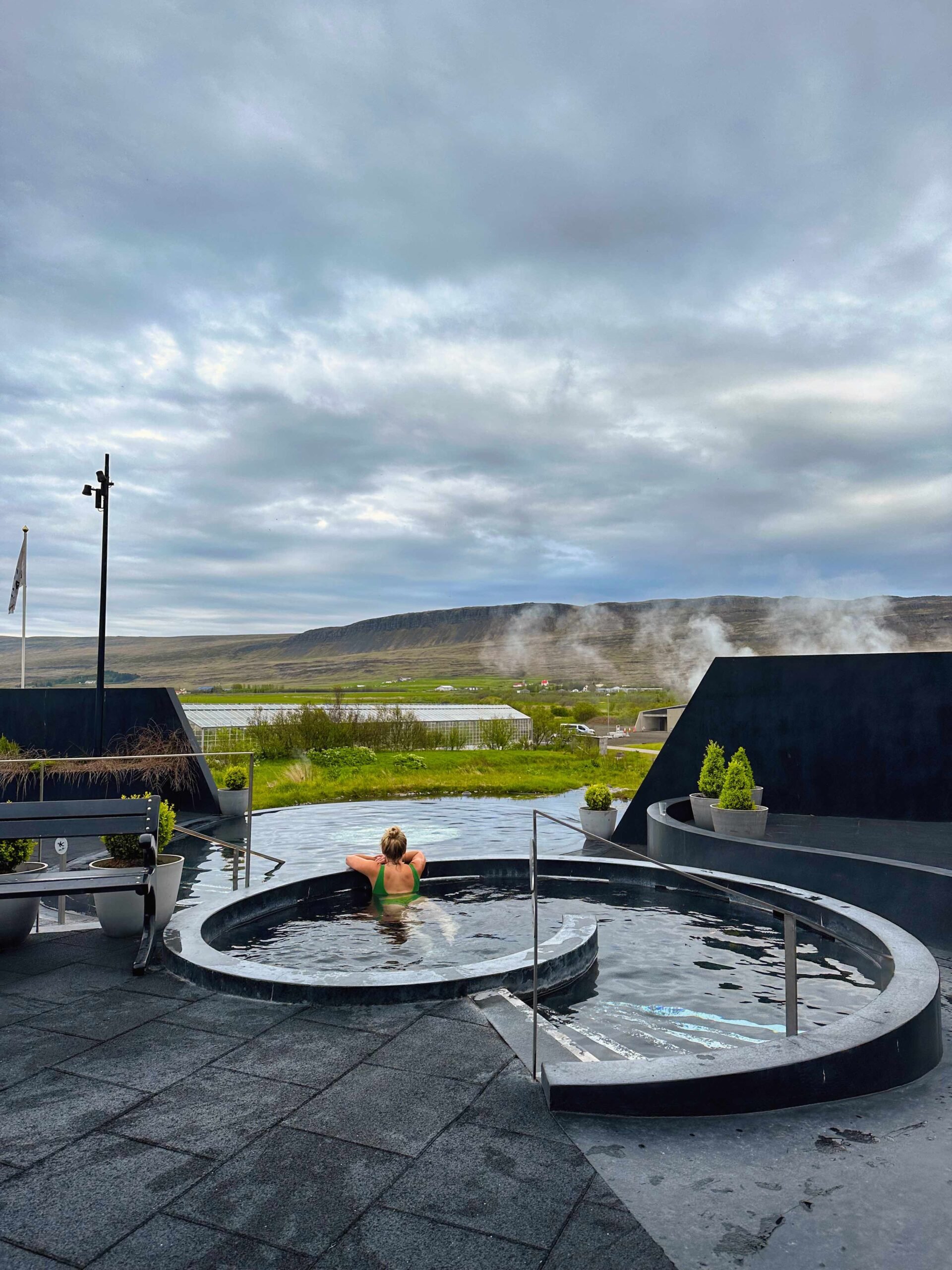
This same concept also applies to the popular geothermal pools in Iceland. For instance, the Blue Lagoon, Sky Lagoon, and Vok Baths are popular stops in Iceland. We always visited the baths either as soon as they opened or about two hours before they closed and found these periods to be the most crowd-free and peaceful—especially at the famous Blue Lagoon!
Rethink Eating Out

Iceland is one of the most expensive countries to visit, and these costs will hit your wallet hard if you go out to eat. Coffee and a bagel in a local cafe will quickly run you $18-$20, and the average meal out at a restaurant will cost anywhere from $35-$70 per person. I wouldn’t even consider ordering a cocktail with that meal if you’re on a budget – we’ve paid less in posh Manhattan bars.
The first time I visited Iceland, I went out with a few Icelanders to a Thai restaurant, expecting to get something reasonable—it was Thai food. Instead, I looked at the menu, decided against paying $30 for Pad Thai, and waited while the others ate their food. Then, I went to an Icelandic grocery store for some bread and skyr and lived off that—true backpacker style!
The grocery stores are where you will get the best value in Iceland, and you can find almost anything you want there! Our favorite grocery store is Bonus—just look for the porky pig! If possible, we’d highly suggest rentals with a kitchen to help save on food costs in Iceland.
Get Your Alcohol at Duty Free
We didn’t drink much in Iceland besides a few glasses of wine or beer while relaxing at the thermal baths. The Icelandic government imposes high taxes on alcohol to discourage excessive consumption and generate revenue. These taxes can significantly increase the retail price of alcoholic beverages.
Additionally, Iceland has a small population and limited local alcohol production, which means that a significant portion of alcoholic beverages needs to be imported. This all means that alcohol, especially liquor and wine, is incredibly expensive. If you plan to drink a bit in Iceland, one of our top travel tips is to get your bottles duty-free when you land in Reykjavik. It’s pretty much open 24/7 and is the cheapest place to score booze in Iceland.
Don’t take a taxi from the Airport to the City

Speaking of the airport, another of my top Iceland travel tips is to avoid taking a taxi from the airport to Reykjavik. If you choose to accept this taxi ride, it may be one of the most expensive in your life. A taxi from the airport to the city can cost upwards of $200!
We paid $30 to drive five minutes from the airport to our hotel in Keflavik as we arrived super late at night. Private buses will take you from Keflavík International Airport to Downtown Reykjavik for a more affordable price. You can book tickets here.
gas stations are where it’s at

Gas stations are where you can find almost everything in Iceland—not just fuel! They’re also where you can find affordable meals and quick takeaway food options. This is a fantastic way to save money if you don’t have a kitchen but don’t want to splurge on an expensive Icelandic meal.
We found many N1s to have great dining options (and often extremely clean bathroom facilities). You can usually find a meal for under 2000 ISK. They’re super popular with locals to meet for a coffee or have a quick meal on the road.
eat at food halls
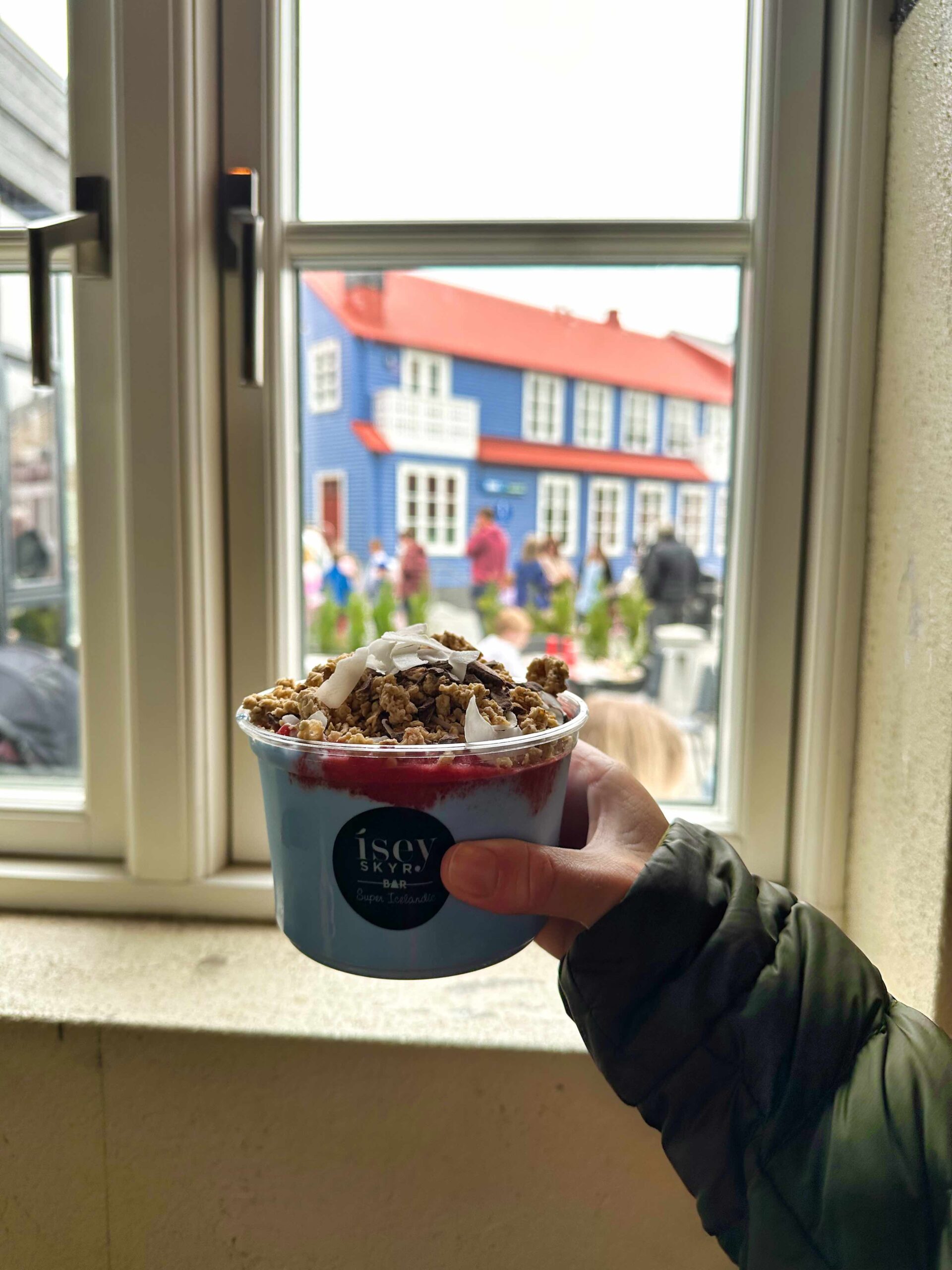
Another great way to save money in Iceland is to eat at the food halls. Food halls are not everywhere in Iceland, but they are generally in the bigger cities and towns like Reykjavik, Selfoss, and Akurya. Here, you can find plenty of different eateries for the whole family without spending a fortune on lunch or dinner!
Talk to the Locals

Most Icelanders are friendly, so I encourage you to mingle with them. This can be hard as there are only 350,000 residents and 2 million tourists annually. On our recent trip there, we found more foreigners than Icelanders, and it became hard to be among the locals. If you want to integrate yourself and learn more about Icelandic culture, visit the local swimming pools and pubs, book a tour guide, and travel during the off-season when there are fewer tourists.
Most Icelanders can speak English.
We’ve yet to encounter an Icelander who can’t speak English, and they speak it almost perfectly – perhaps even better than you! So you never have to worry about communication or things getting lost in translation here.
You are Safe

Iceland is one of the safest countries in the world! It was the third country I traveled to solo and the first I hitchhiked around. The crime rate is shockingly low, making it ideal for solo female travelers. However, do not think you are 100% safe with the low crime rates because Mother Nature is brutal.
In the high season, tourists face life-threatening situations three to four times daily. It is usually their own doing. Iceland’s weather is notoriously unpredictable and life-threatening, especially in the winter. Always use your head when in the wilderness, tell someone where you’re going if hiking, and ensure you have a cell signal to call 112 if you are in unsafe conditions. The number is the universal emergency number, connecting you to all the essential response agencies for incidents.
We suggest checking out Safe Travel to stay updated on weather conditions. If visiting Reynisfjara Black Sand Beach, take the waves seriously. Several tourists have drowned after being swept away by sneaker waves, and it’s become one of the most dangerous places for tourists to visit in Iceland.
Fuel is Expensive

If you plan to rent a car in Iceland, note that gas is costly. It’s a manageable expense to forget, so add it to your budget. At over $2/liter ($8/gallon), I suggest planning your outings accordingly and not wasting fuel. We had a camper van for two weeks and spent over $600 on fuel for our ring road trip. YIKES!
Go Cabin Hopping
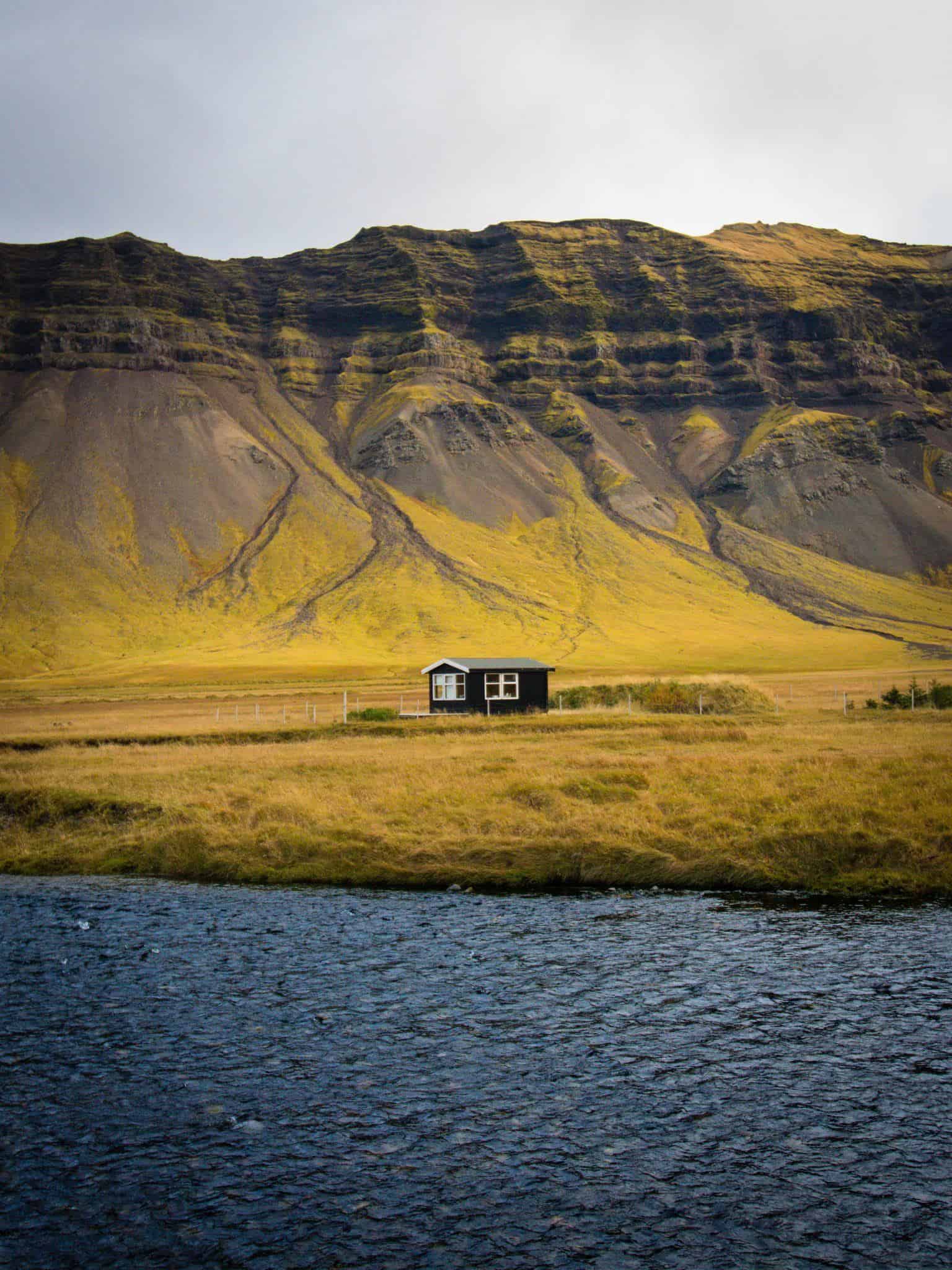
Iceland has some of the most charming family-run guesthouses and cottages scattered across the country. If you are driving around the Ring Road, one of my top Iceland travel tips is to scope out a cabin for a night. Compared to hotels, they are some of the more affordable accommodation options.
Before our Icelandic horseback riding tour, we stayed in one charming guesthouse near Varmahlid called Hestasport Cottages. The place was warm and cozy, with a full kitchen and a communal hot spring to enjoy in the morning or evening. You can find many of these off-the-beaten-path guesthouses on Airbnb.
Iceland is a Ski Destination
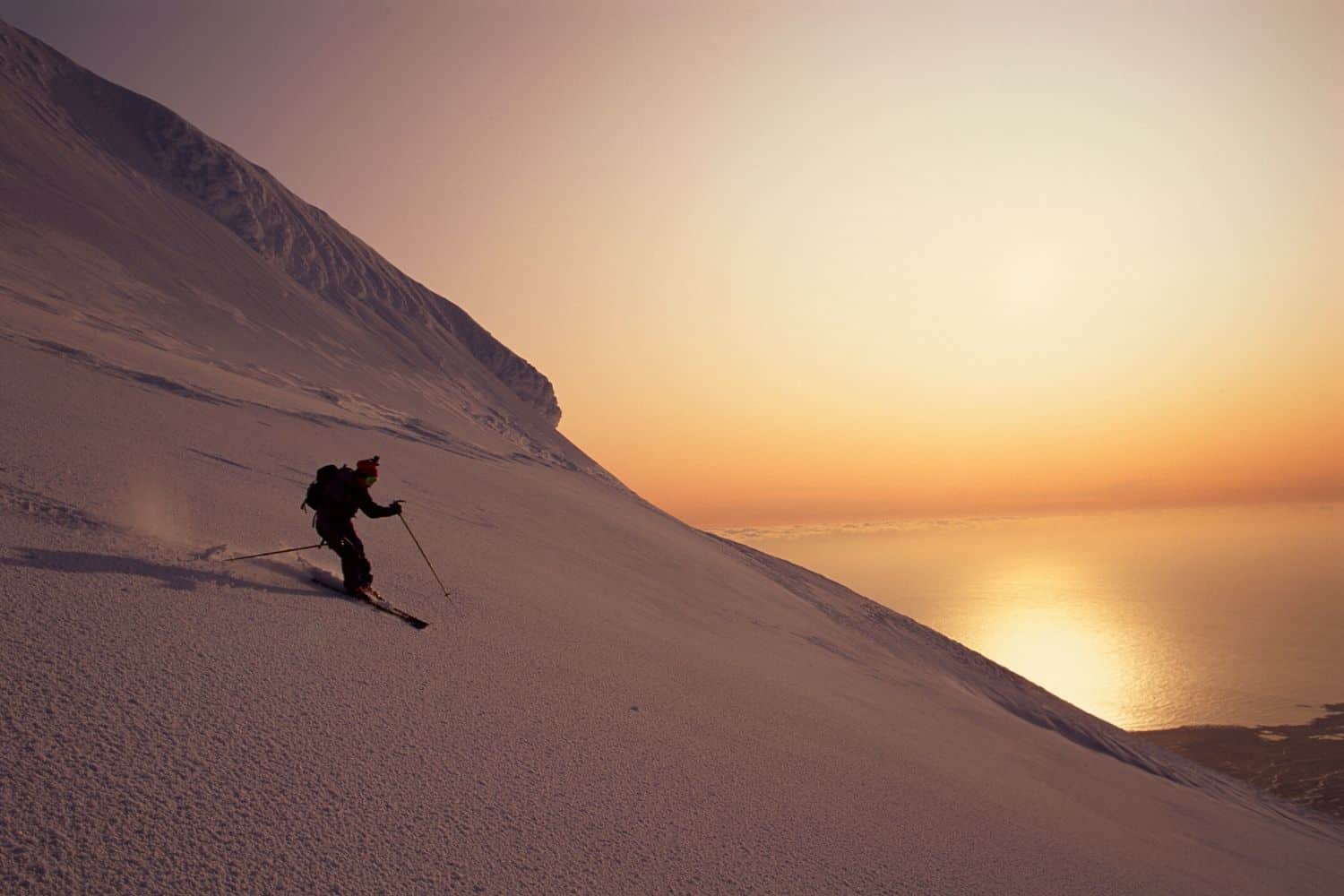
If you’re into skiing and snowboarding, Iceland has some fun ski resorts near Reykjavik, Akureyri, and Husavik. January – April is the high season for these winter activities. For the truly adventurous, you can also go arctic heliskiing in the Skíðadalur Valley. The mountains of the North are amazingly gorgeous. Unfortunately, we weren’t there in winter’s heart to participate in their heliskiing.
Bring an Eye Mask in the Summer

One of my top Iceland travel tips for the summer is to bring an eye mask. If you visit Iceland between April and September, it will still be light out when trying to sleep at 11 p.m. This may affect your sleep cycle, which may already be out of whack because of jet lag.
If your hotel or guesthouse doesn’t have black-out curtains, I suggest packing an eye mask in your carry-on luggage. Even if your hotel has blackout curtains, I would still bring an eye mask just in case – they are cheap and light, so there is no reason not to!
Pack Accordingly!

We suggest some cold-weather clothing no matter what time you visit Iceland. That means a down jacket, rain jacket, boots, and a hat. You’ll be forever grateful after one inclement weather day with wind and rain. Stores in Iceland have plenty of clothing available for purchase, as it’s common for travelers to be unprepared. The only problem is that outdoor clothing in Iceland is very expensive.
The locals say there is no bad weather in Iceland, just the wrong clothes, and I couldn’t agree more! Also, bring a bathing suit and a travel towel for all the geothermal pools! We have a great post to help you pack for Iceland with clothing recommendations.
bring rain pants

If there is one mistake we have made every time we have been to Iceland (and we’ve been three times in June, July, and October), it’s forgetting rain pants. The weather in Iceland is extremely unpredictable, and even in the summer, it can rain a lot. I’m not talking about a little shower. We’ve been caught in long torrential downpours more often than I wanted – in the dead of summer!
I can’t stress enough the importance of a good rain jacket and rain pants. We traveled everywhere with our Arcteryx Shell (which keeps us bone dry) and to Antarctica with Helly Hansen Rain Pants, a lifesaver. I wish we had them on our most recent trip to Iceland!
Bring a Water Bottle

Iceland’s water is 100% drinkable. Along with the rest of the Nordics, it is some of the cleanest water in the world, so there is no need to buy bottled water and put more plastic into the world. Get a refillable travel water bottle and save money and plastic waste. That said, we wouldn’t advise drinking from many streams as some may be contaminated by livestock such as sheep.
Pick up your Rental Car from the Airport

If you plan to rent a car or campervan to get around, pick it up and drop it off at the airport. It could end up saving you a buck. Public transport from the airport is lacking, and the Reykjavik Express, one of the only buses from the capital to Keflavik airport, is 4000 Icelandic Kroner one way. That’s a $35 airport transfer on a bus! I would recommend picking up and dropping off at the airport.
Reykjavik is an Unconventional Capital City

Even though we lived in New York City, we’re not city people anymore. We prefer to be off hiking, on a beach, or doing anything else, not in a busy city. However, Reykjavik is not a typical European city, and we enjoy spending time in this charming city.
There are no high rises and few business suits, just a laid-back atmosphere surrounded by the ocean and mountains. If you only have a few days in Iceland, you can easily base yourself in Reykjavik and take day trips or catch the local bus to places like Esjan.
Reykjavik deserves at least one day of exploration unless you’re there during one of its epic festivals—stay longer! Nordic culture is often quirky, and people love to embrace the weird while celebrating the arts. There is always something worth exploring around their cities.
Get ready to hike
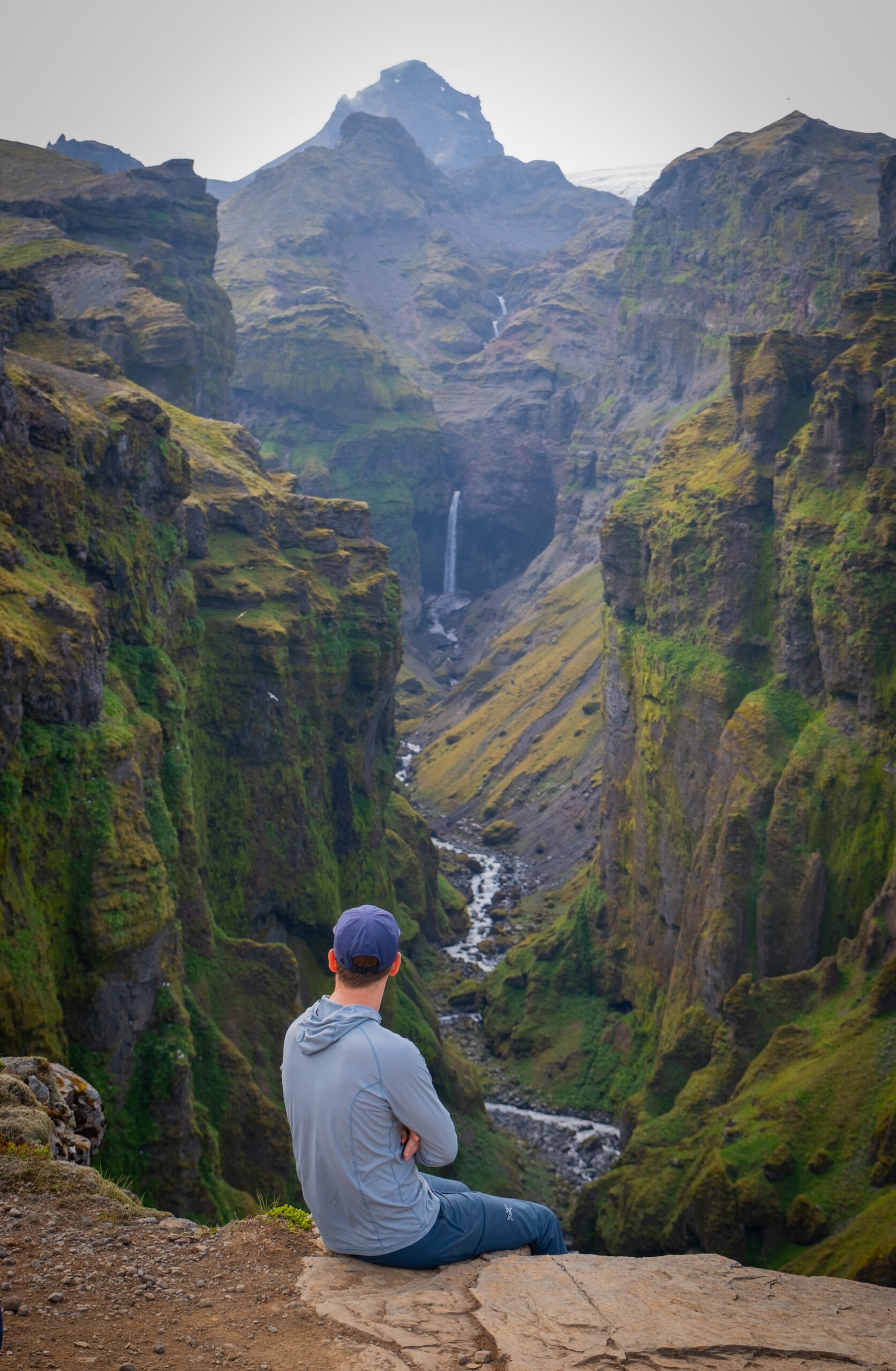
Are you sick of spending money on activities? One of the best things to do in Iceland is hike! There are plenty of amazing and beautiful hikes in Iceland, all free to enjoy. The most you’ll have to pay for is parking your vehicle at some locations at the trailhead. A few of our favorite hikes in Iceland are Glymur Waterfall, Mulagljufur Canyon, and Reykjadalur Hot Springs.
An Abundance Of Waterfalls

There are over 10,000 waterfalls in Iceland! We don’t think anyone truly knows how many waterfalls there are. The country is littered with waterfalls, and many are spectacular. We made it a mission to see as many waterfalls as possible, but even trying our best, we couldn’t even scratch the surface.
Sometimes, especially along the Southern Coast, you’ll see a new waterfall every two minutes. Some are easily accessible, while others require a hike. Our best advice is to pinpoint the ones at the top of your bucket list and try to see those first—any extra waterfalls are just a bonus! However, some notable waterfalls make for a picture-perfect postcard opportunity. We have an article on the most popular waterfalls in Iceland, but below are some of the most notable ones.
- Goðafoss: Waterfall of the gods in the Northeast.
- Háifoss: A bit off the beaten track, but one of the highest in Iceland.
- Morsárfoss: The highest waterfall in Iceland.
- Dettifoss: The most powerful waterfall in Europe.
- Gullfoss: Along the Golden Circle and one of the most famous falls to visit.
- Seljalandsfoss: You can stand behind this waterfall.
- Skógafoss: A unique waterfall that comes directly from two glaciers.
Please, don’t walk on the moss
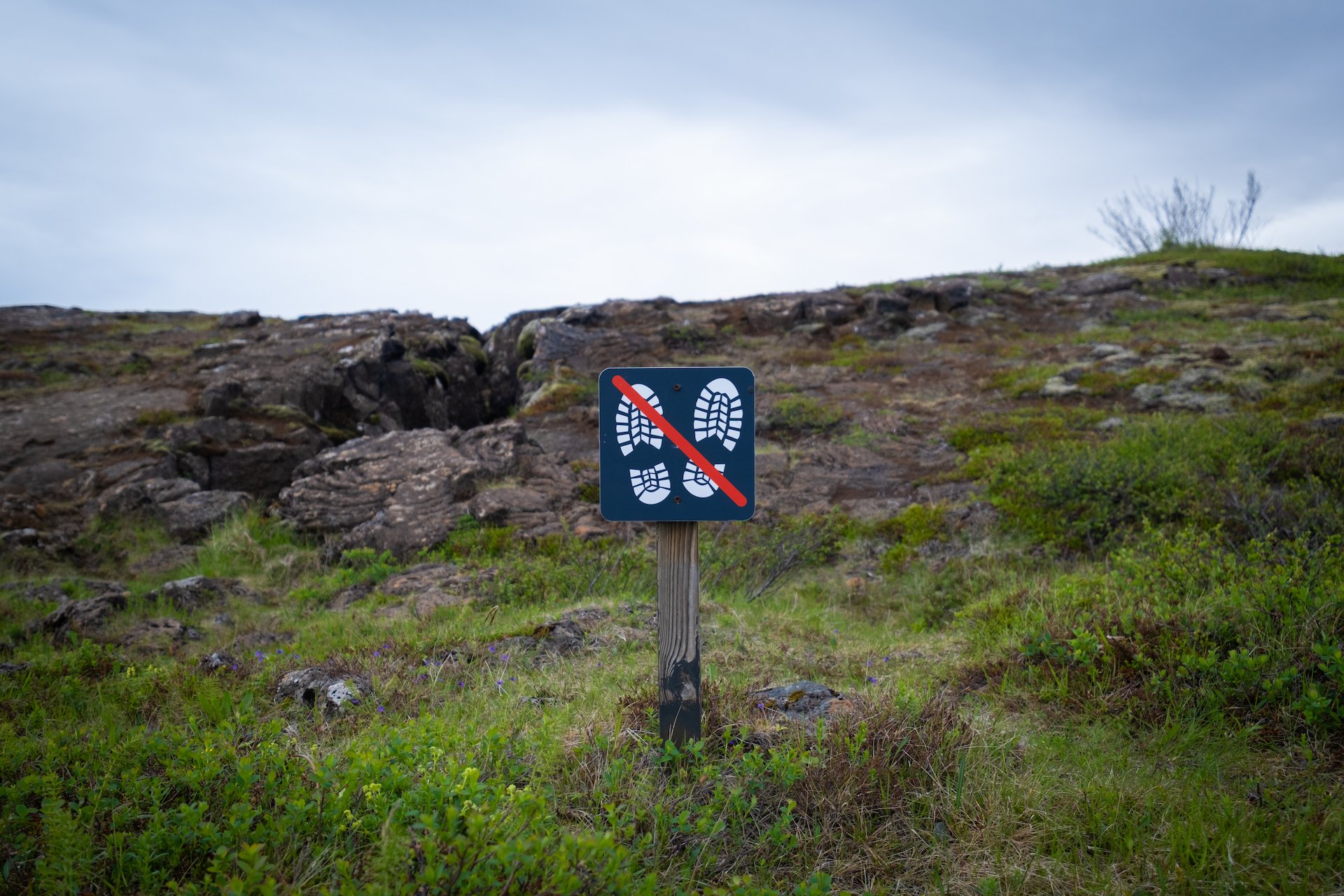
While traveling in Iceland, you’ll surely see all the moss around the country. This moss is very special and delicate. Moss in Iceland grows extremely slowly, sometimes just a few millimeters per year. It is fragile and can take decades or even centuries to recover if damaged.
Avoid stepping on the moss-covered areas and stick to designated paths or trails. Even if you see something you want to get close to, and there’s no set path to it, please leave it be, admire it from a distance, and keep it pristine. Always practice Leave No Trace principles.
The number of tourists we saw in Iceland trampling on so much delicate moss without even realizing it was also troublesome, all for the sake of a photo. Please respect the trails and environment, and leave the area as wild as you found it.
The weather is better in the north

This is completely based on our own experiences in the country, but what we have heard from locals is a true realization. The weather in Iceland is better in the north than in the south. In general, South Iceland tends to be milder and wetter due to the influence of the Gulf Stream; on the other hand, North Iceland tends to have a more pronounced continental climate, with colder winters and warmer summers.
We would constantly check the webcams and weather forecasts on the Iceland Met Office, and every time it was sunshine in the north, it was dreadful in the south. Iceland’s weather is notoriously unpredictable, and conditions can change rapidly regardless of the region.
you won’t be able to do it all

I will end these Iceland travel tips with something every traveler needs to hear—chill out because you won’t be able to do it all. It’s a big country with a zillion things to do, and you’ll need a lifetime to see it all. So focus on your highlights and aim to visit Iceland more than once in your life!
Plan For Your Trip
- Protect Your Trip: We don’t travel without travel insurance, nor should you. You never know what can happen while traveling, so it’s best to be prepared. HeyMondo provides excellent short-term and long-term travel insurance plans.
- Find Cheap Flights: Sign up for Going (formerly Scotts Cheap Flights) to get notified when prices get low.
- Book a Rental Car: We use Discover Car to book all our rental cars! You can also read our top tips for renting a car abroad here.
- Travel Adapter: Make sure you find a good adapter to keep your personal electronics charged. Otherwise, you may be paying for a cheap one once you land. Purchase one here.
- Travel Backpack: We like the Nomatic Travel Backpack for our travels. Check the price here.
- Our Favorite Travel Shoes: Our answer to this question is always Allbirds! Check them out on their site!
- Get a Travel Credit Card: We travel worldwide for free because we have leveraged our spending into points. See how you can do the same with our favorite travel credit cards.

